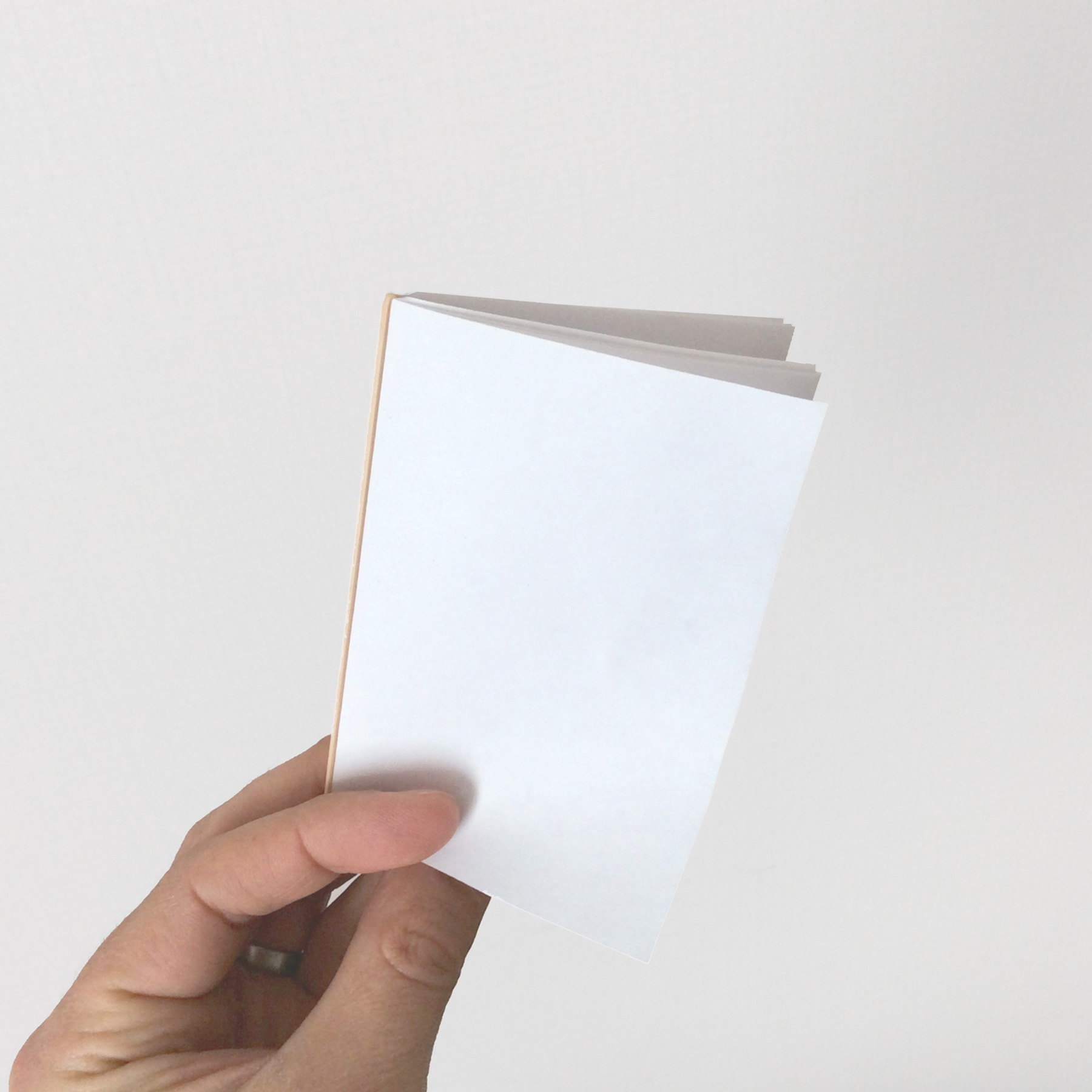Keynote Talk: Breaking Almost Everything
Current practices and future potentials of digital publishing
 Three ingredients for producing a simple paper booklet.
Three ingredients for producing a simple paper booklet.October 14, 2016 | Publishing Art History Digitally | New York
For this event, “Publishing Art History Digitally: The Present and Future”, I was invited to give the keynote address, and then afterward I moderated a roundtable on publishing online journals.
We’re not simply going from point A to point B, we are also inventing point B” — Amy Whitaker
The fundamental question in digital publishing is, “What will our point B be?”. By way of getting us there, I opened the keynote talk by leading attendees though an activity to make a simple booklet with a sheet of paper, some scissors and a rubber band.

Beside being a fun, the point was to illustrate that in order to move digital publishing forward, we first need to understand the fundamental materials and makeup of the publications themselves. While for print it means understanding the qualities of paper, ink and binding, for digital publications it means understanding the qualities of code. I go on to define some of those qualities as plain text, variable, patterned, iterative, read/write (two way), open, and collaborative.
*The event was organized by Nineteenth-Century Art Worldwide, funded by the Samuel H. Kress Foundation and the NYU Center for the Humanities, and held at NYU’s Institute of Fine Arts.*
Talk Abstract
From clay tablet to scroll to codex, the history of publishing can be seen through the lens of technology disruption, followed by hand wringing, experimenting from the fringes, revelation and finally, integration. These early days of digital publishing are no different. We have already seen promising signs of experimentation as authors and publishers alike have sought novel new approaches in both creating and disseminating their work with the powerful new tools put before them. But to bridge the gap from rule-breaking one-off projects to a sound and lasting publishing methodology, we must expand the conversation and collectively work to better understand and control the tools and materials we are working with, namely code. More than facility with specific languages, a deeper understanding of the fundamental qualities of code, may give us the framework and vocabulary necessary to break more rules better, and to find our way to the future of publishing together. The only danger is in going so far in breaking assumptions about a publication that the end result isn’t one. So, just as critical as understanding what code is and what it can be, is a similarly meaningful understanding of the fundamental qualities of what makes a book a book, or a journal a journal, so as we continue to experiment, we’re sure to break just the right things.
Roundtable Description
The roundtable brings together editors from some of the most widely-respected online journals of art history: British Art Studies, Journal18, Triple Canopy, and the journals of the College Art Association. Discussion will center around three central themes. First, in “Balancing Print Tradition and Digital Possibility”, panelists will discuss the launching of their journals, the unique push/pull of their work and that of traditional print publications, and the possibilities and pitfalls of both formats. Next, in considering “Reader Interaction and Interacting with the Reader”, discussion will focus on how users interact with the sites through design and navigation, and likewise how the sites may or may not interact with users, through commenting, social media, and other two-way dialogue. Finally, in the third section, “Evaluation and Change”, the roundtable will focus on analytics, mindful evolution, and what lies ahead.
Other Speakers/Participants
- Colby Chamberlain, Contributing Editor, Triple Canopy
- Martina Droth, Deputy Director of Research and Curator of Sculpture, Yale Center for British Art; Editor, British Art Studies
- Betty Leigh Hutcheson, Director of Publications, College Art Association
- Meredith Martin, Associate Professor of Art History, New York University; Editor, Journal18
- Sarah Victoria Turner, Deputy Director for Research, Paul Mellon Centre; Editor, British Art Studies